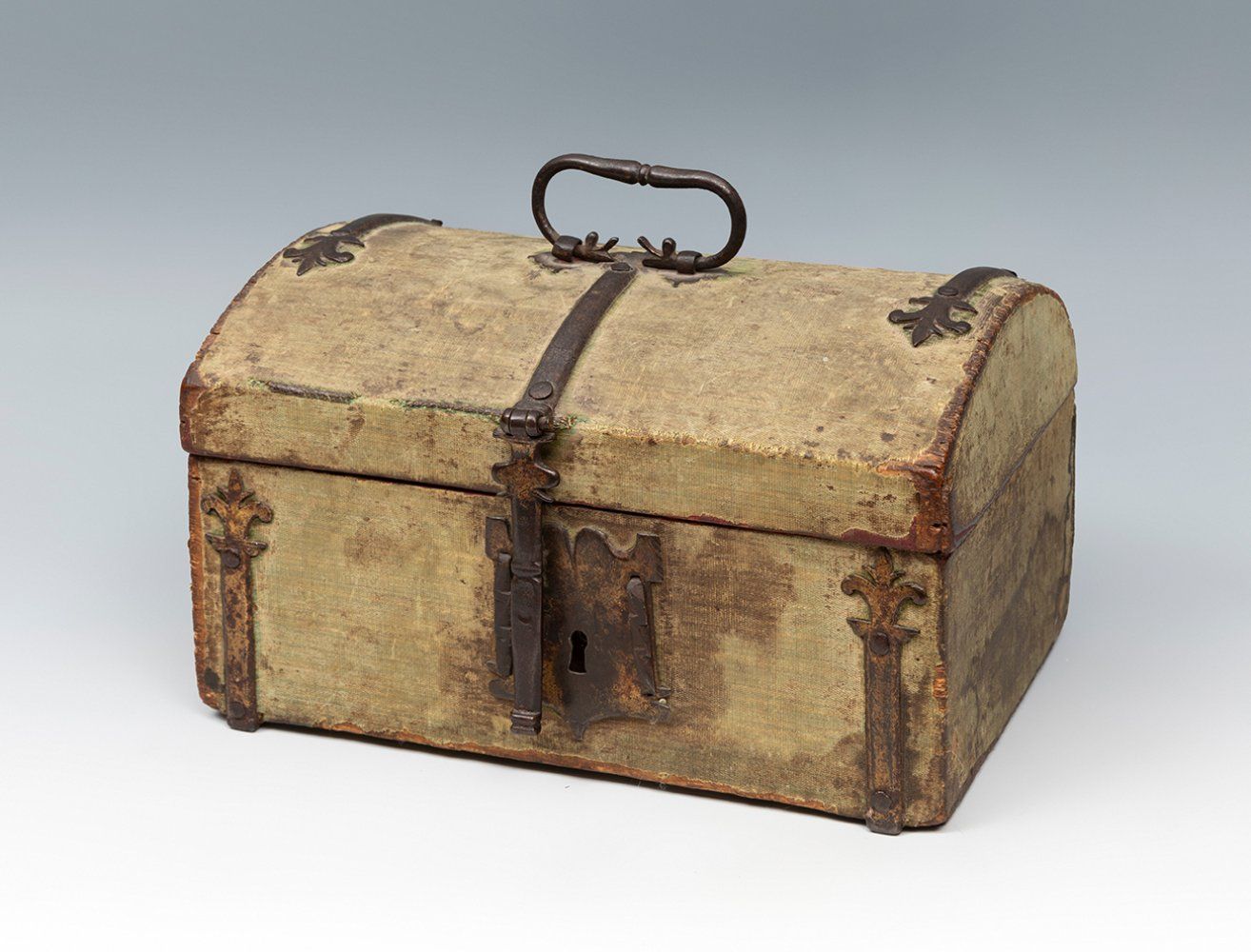Description
Chest; Spain, c. 1500. Wood, velvet and iron core. Measurements: 13 x 23 x 16 cm. Chest made of wood, which has a rectangular structure, topped by a semicircular base lid. The light-colored body has small iron appliqués that delimit the sides of the box, as well as defining the lock, located in the center of the body. The interior is lined with red cloth. The chests and chests were used as the perfect place to treasure jewelry, documents or those elements of value of the owner. The importance of their contents was also often reflected on the outside, for this reason they were profusely decorated with marquetry of exotic woods, stones, bone or ivory, they were polychromed with vegetal designs or scenes, and they used to have silver bronze applications or gilded iron fittings. The household furnishings consisted of few pieces of furniture and it was not until the 18th century when they began to diversify with a concrete and specific use. The houses tended to have whitewashed walls with mud floors and covered with vegetable mats. This austere environment was occupied with furniture that was equally robust and even versatile in the sense that it could be used for several rooms or be transported with its owner.
125
Chest; Spain, c. 1500. Wood, velvet and iron core. Measurements: 13 x 23 x 16 cm. Chest made of wood, which has a rectangular structure, topped by a semicircular base lid. The light-colored body has small iron appliqués that delimit the sides of the box, as well as defining the lock, located in the center of the body. The interior is lined with red cloth. The chests and chests were used as the perfect place to treasure jewelry, documents or those elements of value of the owner. The importance of their contents was also often reflected on the outside, for this reason they were profusely decorated with marquetry of exotic woods, stones, bone or ivory, they were polychromed with vegetal designs or scenes, and they used to have silver bronze applications or gilded iron fittings. The household furnishings consisted of few pieces of furniture and it was not until the 18th century when they began to diversify with a concrete and specific use. The houses tended to have whitewashed walls with mud floors and covered with vegetable mats. This austere environment was occupied with furniture that was equally robust and even versatile in the sense that it could be used for several rooms or be transported with its owner.
You may also like
